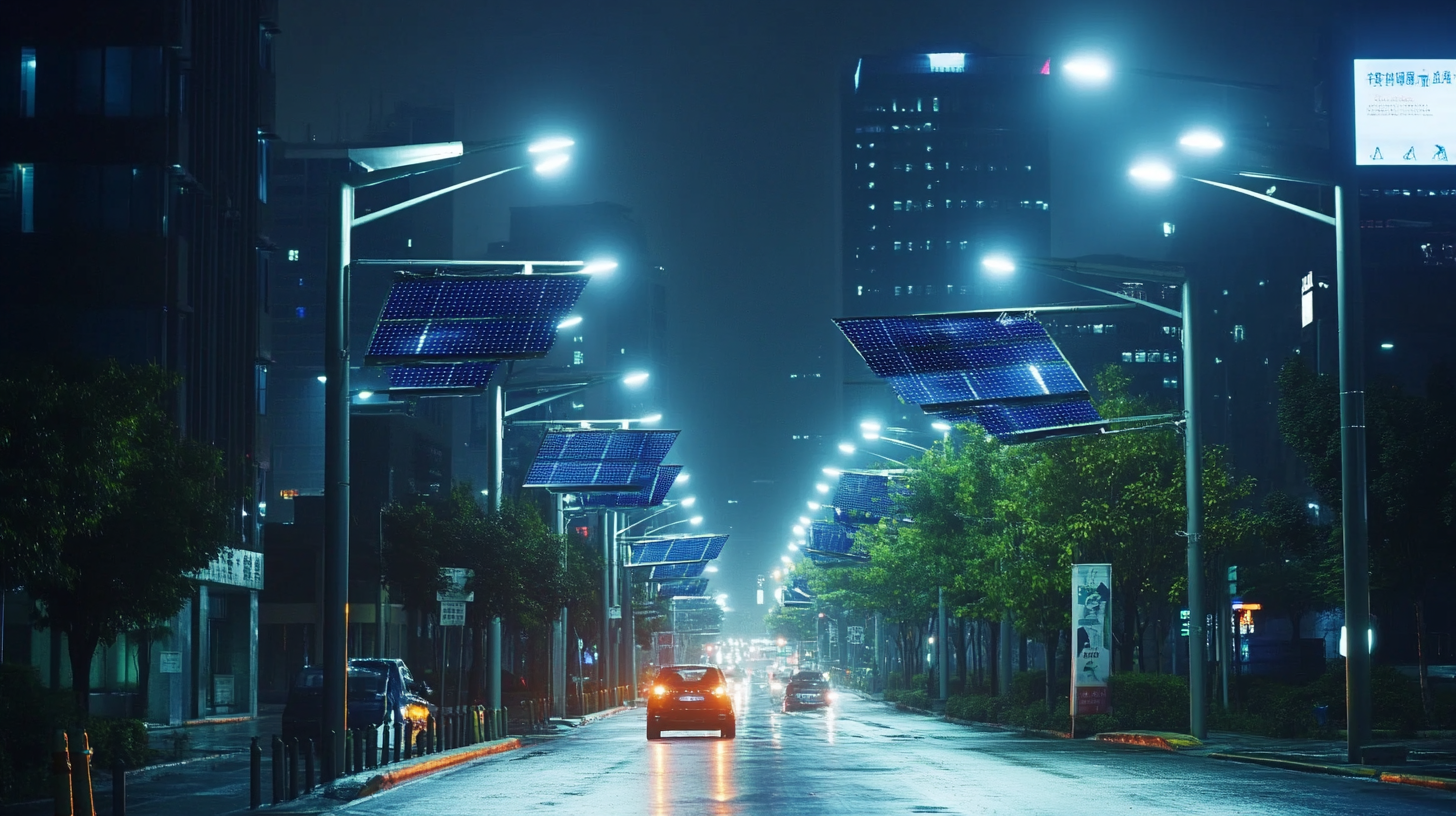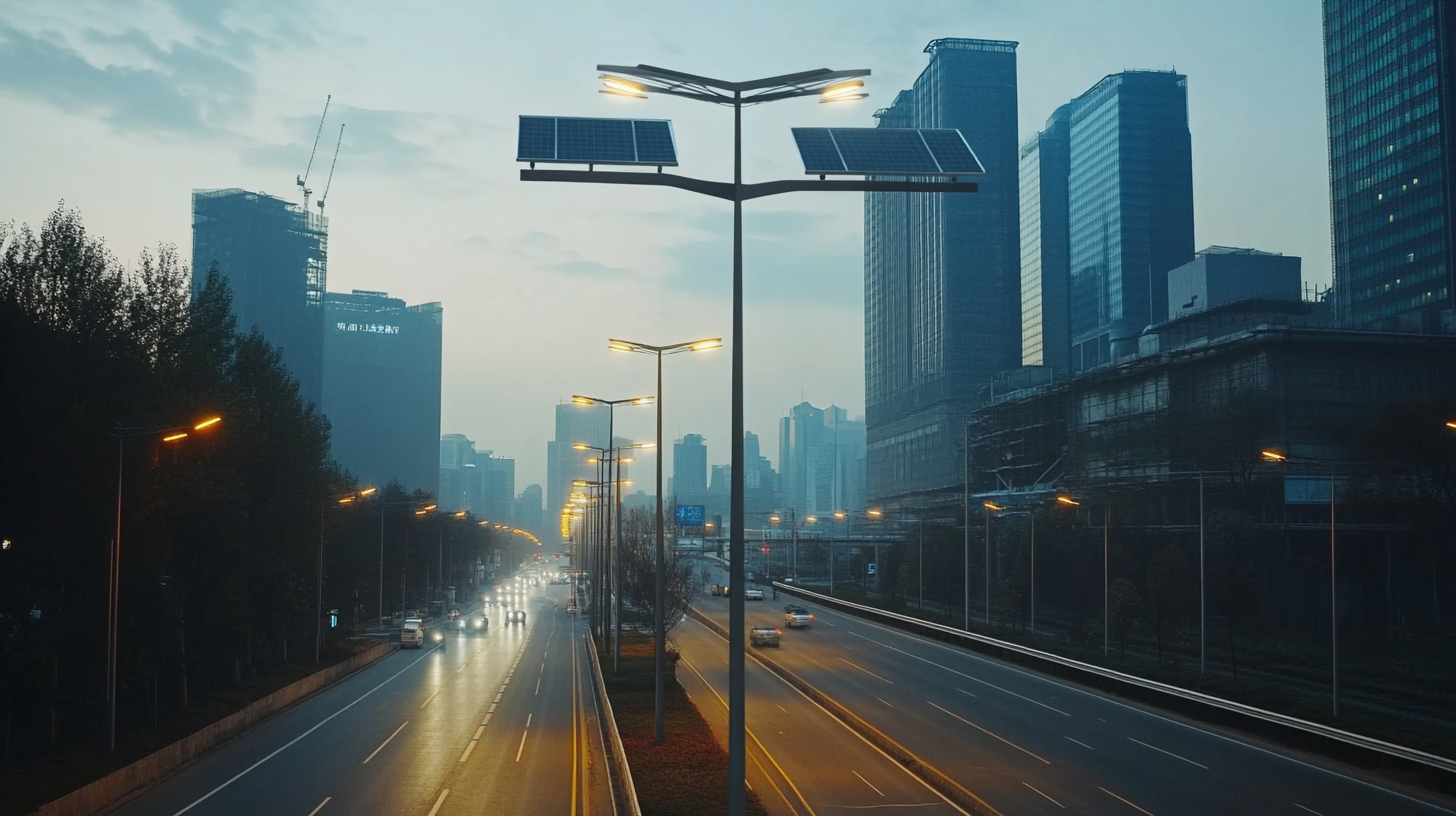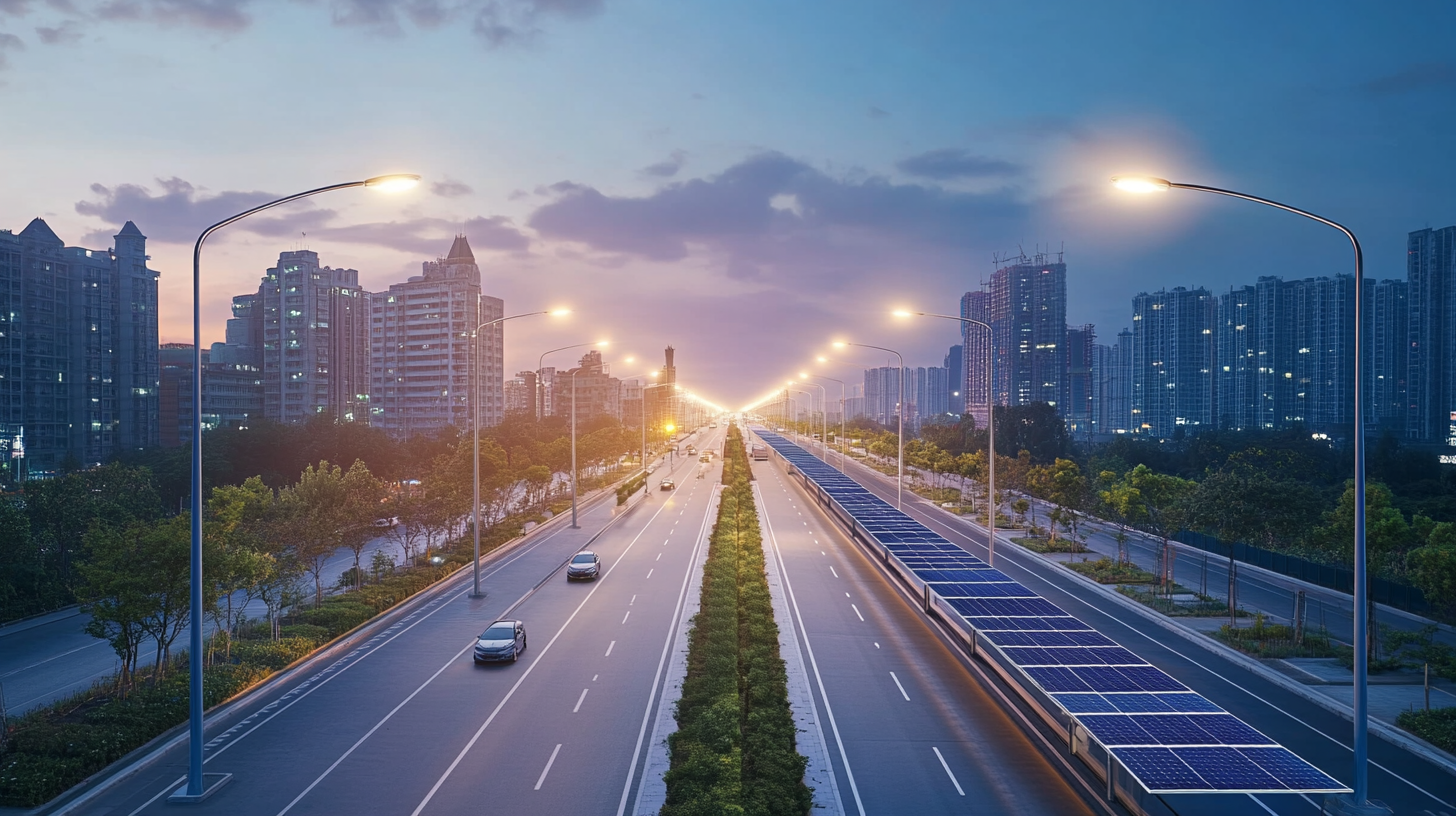Global Trends in Solar Street Lights for 2025 Redefining Sustainable Urban Mobility
Urban infrastructures, especially solar street lights, have seen many advancements due to the recent tilt towards sustainable urban mobility worldwide. Based on a report published by ResearchAndMarkets, it is expected that the solar street lighting market is to develop with an excellent CAGR of 29.2% from 2021 to 2026 on robust demand prompted by the necessity of energy-efficient lighting solutions in urban settings. Solar street lights are now an alternative in view of growing energy prices and environmental concerns in cities; this will not only help the cities become more sustainable but also secure and accessible for the benefit of the populace.
By 2025, we can almost see it affecting the use of solar street lights in reshaping urban mobility and sustainability. According to the International Energy Agency (IEA), the use of renewable energy solutions such as solar light will considerably reduce carbon emissions and improve air quality in areas of high population density; it beautifies the surrounding areas while also answering global goals of renewable energy. As innovation gets cheaper and better, installation of solar street lights would form the backbone of sustainable and smart urban mobility strategies being implemented worldwide in the very near future.

Emerging Technologies Shaping Solar Street Lighting Innovations
Adoption of solar street lights will make a significant leap forward by 2025. The company's adoption of such technology will very likely move the infrastructure of future cities closer to that anticipated. According to reports from Grand View Research, the global solar street lighting market in 2022 was estimated at $3.8 billion and is expected to grow with a compound annual growth rate (CAGR) of 22.5% from 2023 to 2030. These positive prospects reflect the increasing demand for sustainability and energy savings in transportation scenarios.
Innovative technologies have made it much easy by integrating IoT into the concept of solar street lighting. For example, intelligent motion detection applications adjust the brightness of street lights in accordance with the activity of pedestrians. As MarketsandMarkets reports, the integration of IoT into solar lighting solutions is expected to account for most of this market, leading to up to 30% improvement in energy efficiency. This is in line with the increased propensity for smart cities that use such data for better management and sustainability of urban settlements.
Besides, the battery storage technology and efficiency of solar panels are highly critical for further enhancing the performance of solar street lights. Such new solar panel technologies report efficiencies of over 25%, according to reports from the National Renewable Energy Laboratory (NREL). This performance exceeds traditional models but also would ensure that these types keep working in conditions with little light. This technology not only supports environmental goals but also guarantees safer and smarter spaces in public for future urban mobility.

Impact of Solar Street Lights on Urban Mobility and Traffic Flow
Now, it's about solar street lights for cities in changing mobility and traffic flow as part of a program to improve sustainability of whole infrastructure in cities. According to the report by the International Energy Agency (IEA), solar street lights can reduce energy costs by as much as 75% compared to conventional street lighting. Apart from being of real aid to city budgets in themselves, the energy savings also support healthier and greener cities that are becoming increasingly important in the fight against climate change.
Moreover, solar street lights do far more to improve the flow of pedestrian and vehicular traffic. Thus, it becomes possible for dark urban areas to become safer at night, which, in turn, encourages increased foot traffic and active commutes. According to a study published in the Journal of Transport and Health, well-lit surroundings can decrease crime by as much as 30%, creating more public comfort in using public places after dark. This likely shifts the mode of transportation to more sustainable means, such as cycling and walking, which further decreases reliance on fossil fuel-powered vehicles.
Smart solar street light features that can include motion sensors and adaptive lighting will optimize energy use while providing improved visibility during peak hours. The smart technology implementation for such street lighting has also reported decreased energy consumption by at least 30%. It would create within an urban landscape much more efficient use of energy. At the same time cities are being prepared for the future, investing in solar street lights promises to help redefine urban mobility-the enhancement of safer, greener, and more accessible transportation networks.

Sustainability Benefits of Adopting Solar Street Lights in Cities
Increasingly, cities are moving towards solar street lights because a worldwide drive towards sustainability causes a gale force-moving wind blowing new forces into the future. Cities adopt renewable solar energy measures to help it significantly reduce its carbon footprint and enhance public safety and aesthetics. These novel lighting devices light up streets and pathways, save energy, and lessen dependence on fuels. As cities demand ever more energy, such sources serve as a sustainable alternative to securing urban mobility without damaging the environment.
Solar street lights are one of the most attractive sustainable features that offer the potential for diminished operational costs. In fact, previous systems of street lighting demanded huge utility bills and massive costs on maintenance. In contrast, these types of lights utilize free solar energy, normally demonstrating lower levels of maintenance due to less moving components and robust designs. Ultimately, this cost-saving could release budgets within the city for use elsewhere on other significant services or on another further developable sustainable project, all for a healthier urban environment.
Further, the use of solar street lights ensures social equity for cities. The lighting of parks, pathways, and even relatively less networked neighborhoods improves the traversability of both pedestrians and cyclists and thus promotes more environment-friendly modes of transport. Visibility enhancement reduces crime rates and contributes to a more vibrant community atmosphere, making cities feel friendlier and more reachable for everyone. With an increasing adoption trend for solar street lights, urban planners and city officials will easily construct places that are inclusive with mobility and then promote environmental stewardship into the future.

Case Studies: Successful Implementation of Solar Street Lights Globally
In their pursuit of sustainability, cities around the world have found solar street lights as an important innovation for urban mobility. Countless case studies point to successful implementations that enhance public safety while creating a positive impact on environmental sustainability. An exemplary case is that of San Diego, California, where solar street lighting has been integrated into numerous neighborhoods. This initiative has helped save energy, reduce carbon emissions, and support the city's mission to becoming climate neutral by 2035.
European cities like Amsterdam are showing the versatility of solar street lights. The city has solar lights installed along bike paths, increasing visibility for both cyclists and pedestrians. These lights are also equipped with smart technology that adjusts brightness in accordance with the number of activities taking place at a given time, thereby conserving energy and ensuring safety. With this synergy of solar lighting and urban mobility infrastructures, this approach characterizes an out-of-the-box way of city planning.
The Global South has also embraced solar street lighting in addressing frequent power failures in cities like Lagos, Nigeria. These street lights use solar technology for reliable illumination, thereby helping reduce crime and instilling pride in society for improved safety. Such projects, with community participation in construction and installation work, instill a sense of ownership among residents and empower them to take charge in sustainable development. This proves that in its contribution to sustainable development, solar street lights are not just important in redefining urban mobility but also stand as a classic example for other cities seeking sustainability to follow.
Future Policy Directions for Promoting Solar Street Lighting Solutions
With the continued growth and evolution of cities, the integration of sustainable solutions into the urban landscape has become more important than ever. Solar street lighting is emerging as a critical component of that change. Besides providing illumination, it sets the pace for higher energy efficiency and lower carbon footprints. With future policies directed towards encouraging solar street lighting solutions, its benefits will be maximized, setting the stage for smarter, greener cities.
Incentives and funding opportunities from the government will be paramount to encourage the embrace of solar street lighting by various municipalities. Such policies may include tax exemptions, grants, or low-interest loans. These will help bring down the cost barrier of solar technology. The partnership initiatives would encourage the cooperation of local governments and private companies in making projects financially feasible and properly implemented. By creating an enabling environment, policymakers can stimulate innovation and attract businesses to invest in solar solutions.
Regulatory frameworks must also evolve to help foster the widespread introduction of solar street lights. Streamlining permitting processes, developing standardized installation guidelines, and ensuring that public installations conform to safety and aesthetic considerations all need to be addressed. Such measures could increase the uptake of solar street lighting projects tremendously and make them more commonplace in the urban landscape. As cities learn to embrace sustainability in mobility, solar street lighting is there to shine bright along that path, ensuring safety and environmental stewardship.





